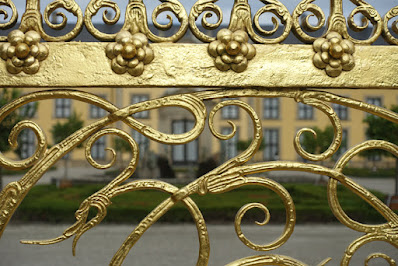 |
| Redwood Sky Walk, Sequoia Park Zoo, Eureka, CA |
On my visit to Humboldt County in October for the children’s author festival I had the opportunity, along with the other festival authors, for a guided tour of the new sky walk at the Sequoia Park Zoo. The Redwood Sky Walk in Eureka is the highest skywalk among redwood trees in the world and the longest sky walk in the Western U.S. Just under a quarter mile to the end and back, the Redwood Sky Walk is 100 feet above ground within the city of Eureka's treasured Sequoia Park and Sequoia Park Zoo.
Before I got there I was worried about climbing steps to the walkway but discovered that there are no steps at all! One ascends from ground level on a very long ramp, so gradual that it hardly seemed like we were going uphill.
At the end of the ramp we reached the first tree platform. From there suspended wooden bridges connected a series of further platforms securely attached to sturdy tree trunks. Below us the ground sloped away, increasing our distance from the earth.
And yet, even though we were high above the ground, the tops of the trees still towered above. A redwood can grow up to 400 feet tall!
The Sky Walk begins at the launch deck and is basically a circle made of two parts: the first part, made of solid wooden bridges (that don’t move when you walk along them and are accessible by wheelchair), ends at a large platform called the accessibility turnaround. At that point you can retrace your steps; or, you can continue around the circle via hanging (wiggly) bridges.
With a little trepidation, I followed the group across the hanging bridges, clutching the handrails as I moved forward. After crossing the first one, I felt more confident on the rest.
The thrill of doing the Sky Walk is the view—up at the tree canopy, across to other platforms, down at the ground. Far below we could see people walking and biking along the trails through the forest. Every platform also featured informative signs—about forest wildlife, the history of the park and the redwoods, the life cycle of the trees, the ecosystem of the forest and more. We learned from our guide, the zoo director, that he climbs the trees periodically to check the security of all the cables and make sure everything is safe.
Besides the Sky Walk, the Sequoia Park Zoo also has plenty of other things to see and do. We arrived just as it was time to feed the river otters and we watched them somersault and cavort in the water as they dove after fish. At the end of our visit, after the Sky Walk, we stopped briefly to see the red panda and some of the other animals. Altogether, it was a great day at the zoo!
For information and tickets for the Sequoia Park Zoo and the Redwood Sky Walk go to the zoo website.




































